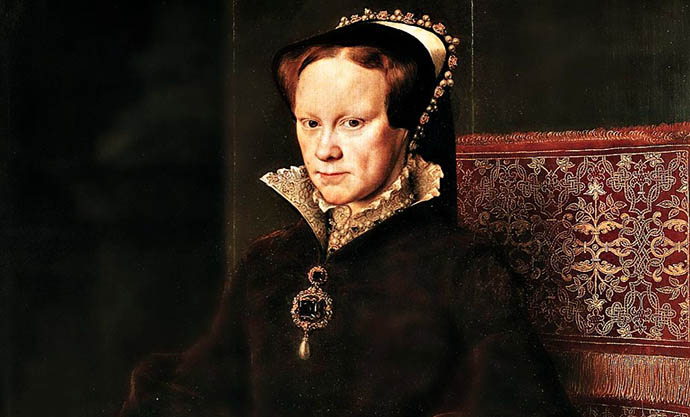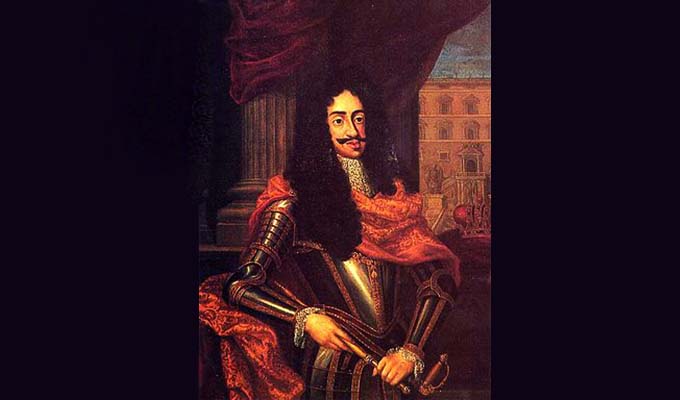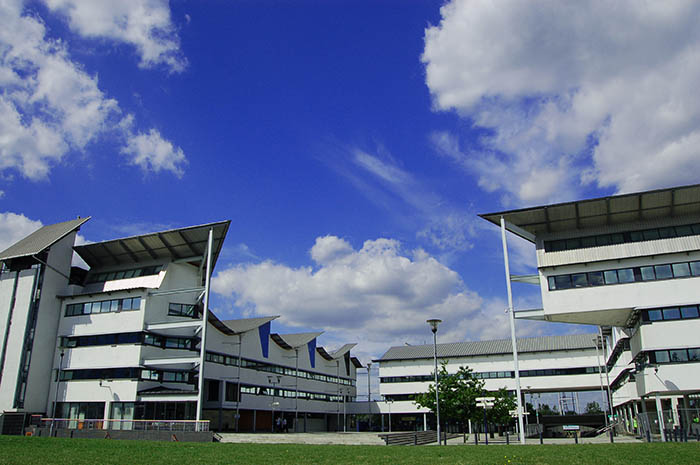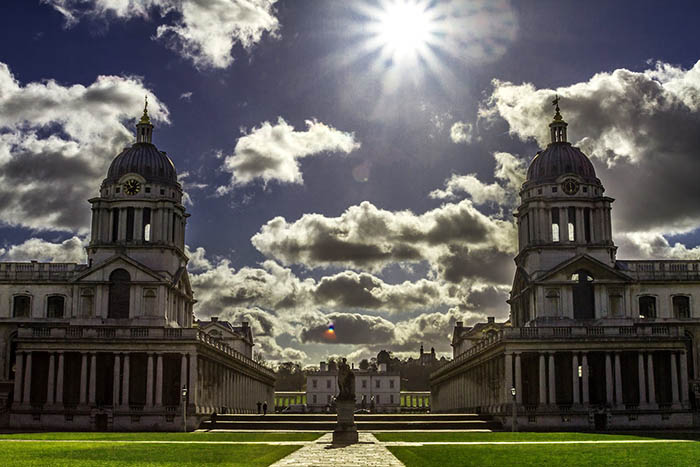
After defeat in Germany attempts of Catholic camp to achieve a Counter-Reformation victory in England though at one time it seemed that these objectives are already achieved terminated in failure. To Henry VIII the juvenile son Edward VI inherited him. Fight of court cliques in its board intertwined with performances of opponents of the Reformation who managed to use national discontent in the purposes more than once. In Eduard’s government the power was challenged by the king’s uncles — the duke Edward Seymour, the duke Somerset who died on an executioner’s block, and John Dudley who won a victory over it, the duke Northumberland. The Catholic camp tried to interfere with this fight, resorting to methods of secret war. In the spring of 1550 the imperial ambassador in England Van der Delft prepared the plan of flight of the princess Maria Tudor (Henry VIII’s daughter from his marriage with Catherine of Aragon) on the Spanish vessel plying for this purpose about Haridzha. The plan failed, and the English government doubled the watch over Maria who was fanatically asserting the right to remain the Catholic. In 1551 the emperor Charles V seriously discussed a possibility of disembarkation in England of the Spanish army. His new ambassador in London of Sheyv had spies in the seaports watching especially whether help is given to the Scottish pirates who waged war against the Netherlands navigation. (We will remind that Scotland was closely connected by dynastic bonds with France — the main competitor of the empire of Charles V including the Netherlands.) . After Edward VI’s death the duke Northumberland tried to crown Henry VIII’s niece Jane Grey, but failed and was executed. Maria Tudor who decided to carry out Counter-Reformation in England came to the throne. However, at once it became clear that to return to monasteries the lands confiscated at them at Heinrich was absolutely unrealizable business. Maria encountered even resistance of the ministers here. At a meeting of Royal council old John Russell, the Duke of Bedford, swore that “appreciates the expensive uobernsky abbey more, than any fatherlike manuals from Rome”. The persistence of ministers forced even the fanatical queen to agree to that restoration of Catholicism was not followed by return to the taken church property. But also after that restoration encountered deaf discontent in the country. Maria Tudor married the son Charles V — Philipp (future king Philip II). At marriage Philipp received the Neapolitan kingdom and the Milan duchy from the father. But the English parliament did not agree to its crowning, and Philipp remained for British only the queen’s husband. Nevertheless, threat of absorption of England by the huge power of Gabsburgs became very real. In January, 1554 the revolt headed by Thomas Wyeth and other Protestant noblemen broke out. Insurgents rushed into London and were crushed only after heavy fighting with royal troops. Wyeth tried to get Elizabeth’s support, the queen’s sisters. The young princess whom experience taught care responded nothing to the letter sent it. Nevertheless it and one more possible applicant for a crown — the viscount Kurtney — were sent to the Tower. Contemporaries transferred even as if the commandant of the Tower sir John Bridges received the order on Elizabeth’s execution. The order was sealed royal, but on it there was no Maria’s a signature, and Bridges therefore refused to execute it. The commandant went to the queen who declared that she does not know of the order and called the confidants — the bishop S. Gardiner and others, reproaching them that they acted without her sanction. If this history is true, then could lay a hand to a fabrication of the false order and. influential ambassador. Simone Renard’s emperor. He considered that Elizabeth willy-nilly will become concentration of forces of Protestant party. The ambassador insisted on Elizabeth’s execution, but Maria decided to be limited to dispatch it from London — there were no proofs that the princess encouraged insurgents. However, French translation of the letter of Elizabeth to the queen in the intercepted French diplomatic mail was found. Whether but the princess transferred the copy of the letter to French? Was not a secret that the environment of the queen teemed with spies. The French ambassador Antoine de Noaille even married one of Elizabeth’s maids of honor for this purpose as suspected to get access to correspondence of the princess. Antoine de Noaille and his brother François appointed to him in the help also the ambassador — representatives of the Catholic king of France — at once began to support actively Protestant party in hope to weaken the Spanish influence. The French king Henry II decided even to support the plan of new plot prepared by enemies of the queen Maria. This plan included revolt in the western counties and a campaign of insurgents to London, capture of the Tower and mint, disembarkation of group of conspirators emigrants from France to the English coast, occupation of Portsmouth and the lock in Yarmouth, occupation by French of the island of Whyte. After that it was possible to dethrone Maria Tudor and build to a throne Elizabeth. Carefully developed plan was implemented, however, with a scratch. In the beginning the French king began to hesitate, but more impatient conspirators decided to act, without waiting for his help. Meanwhile, however, spies of the cardinal Poul, the chief adviser to the queen, managed to find change. Arrests of conspirators followed. Elizabeth appeared under suspicion again. The search executed in her residence led to confiscation at confidants of the princess of a large number of the underground anti-catholic literature which is secretly imported into England from abroad. Clouds hung again over the head of Elizabeth which destiny the queen discussed in letters to the husband Philipp who left England. Spain was in sharply hostile relations with France and the Pope Paul IV at this time. The English help therefore got special value, and Philip II, considering bad health of the wife, in advance sought to secure with a favor of her probable successor. He advised Maria to show condescension to the sister. March 20, 1557. Philipp returned for a while to England. Soon after that, at the end of April, 100 emigrants led by Thomas Stafford left France and landed in Yorkshire. They claimed that they act with full support of Elizabeth. New revolt did not gain big scope, and was quickly suppressed by royal troops, the captured insurgents were immediately executed. Philipp tried to use obvious support by French of rebels to achieve the broad English help for war against Henry II. And again just in case used the influence not to allow trial of Elizabeth. England was involved in war with France. It was a striking example of the fact that the closest purposes of all Catholic camp and its leading power could disperse seriously. In a month after Maria Tudor’s death Philip II began to look for hands of her sister and the successor Elizabeth. The king wrote the ambassador about huge value of this marriage planned by it “for all Christianity and preservation in England of the religion restored thanks to the grace of God”. Of course, at the same time Elizabeth had to adopt Catholicism. After long negotiations the ambassador informed Philip II that Elizabeth “cannot marry your majesty because she is a heretic …”. Nevertheless, Philip II continued to support actively the new English queen against her opponents who were Catholic France and the widow of the French king Francis II — the Scottish queen Maria Stewart. And this support, in turn, was defined by fears that defeat of England in fight against the coalition of France and Scotland can lead to such change in the ratio of forces which will undermine positions of Spain in the Netherlands belonging to it. However Philipp’s calculation that Maria Tudor’s successor will keep a former foreign policy was groundless
Chernyak E. B. Century conflicts






Leave a Reply